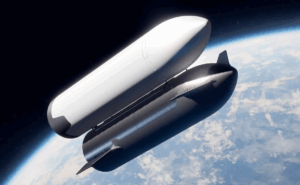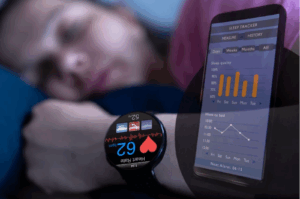The small helicopter has spent over nine months on Mars
Nearly 120 years after the Wright brothers flew their first plane, the National Aeronautics and Space Administration (NASA) achieved another milestone: the first powered flight on another planet (1, 2). This advance in aviation history in 2021 was achieved using Ingenuity, a four-pound helicopter equipped with solar panels and a revolutionary rotor system (3).

The success of Ingenuity required overcoming numerous challenges. Martian atmospheric conditions make flight more difficult than on Earth (4). The Martian atmosphere is much colder and has surface pressure about 1% of that of Earth (4). NASA and the Jet Propulsion Laboratory (JPL) needed to develop helicopter blades that were not only light enough to fly but also large enough to generate lift in these atmospheric conditions (4). Ingenuity’s blades are made of foam and carbon fiber and rotate at more than 2,500 revolutions per minute, about six times as quickly as typical helicopters on Earth (3, 5). Using a method called counter rotation, Ingenuity’s two blades rotate in opposite directions to prevent the body of the helicopter from spinning (3). Counter rotation allowed engineers to maximize the size of the blades, generating more lift, while ensuring that the blades would unfold properly when the helicopter was deployed from beneath the rover Perseverance.
Ingenuity has exceeded NASA’s initial expectations of a few successful flights, completing more than 18 flights during the nine months since its initial takeoff (6). The flights are unassisted, meaning that small computers on the helicopter must autonomously manage takeoff, flight, and landing after receiving instructions from Earth (3). Ingenuity uses a single black and white camera to recognize surface features of the landscape to determine its location on Mars (7). In the frigid climate of Mars (at around -130º F), the helicopter also must regulate its own temperature to keep its electronics functioning properly (3). All of these self-controlled systems require powerful computing, and one of the main challenges for NASA was obtaining small enough computers to fit in the helicopter’s body, which is about the size of a cantaloupe (3).

Using its small but powerful technology, Ingenuity traveled in short flights to different locations near the Jericho Crater, one of the many craters on Mars (8), accumulating almost four kilometers of flight. Ingenuity, which can fly faster than 7 kilometers per hour, is able to more rapidly survey the Martian surface than Perseverance and other rovers, which can only move at 0.15 kilometers per hour (9, 10).
Ingenuity was intended to demonstrate that autonomous flight is possible on Mars. With the overwhelming success of this powered flight on Mars, planetary aircraft with new designs and sensory capabilities will no doubt be included in missions to different areas of Mars and to other planets.
Citations:
1 1903-The First Flight – Wright Brothers National Memorial (U.S. National Park Service). (2015). Nps.gov. https://www.nps.gov/wrbr/learn/historyculture/thefirstflight.htm
2 https://jpl.nasa.gov. (2020). Mars Helicopter. NASA Jet Propulsion Laboratory (JPL). https://www.jpl.nasa.gov/missions/ingenuity
3 Mars Helicopter/Ingenuity. NASA. (n.d.). Retrieved January 17, 2022, from https://mars.nasa.gov/files/mars2020/MarsHelicopterIngenuity_FactSheet.pdf
4 Kluger, J. (2021, April 19). How NASA’s Mars Helicopter Flight Opens the Door to More Ambitious Missions. Time; Time. https://time.com/5954081/ingenuity-helicopter-flies-on-mars/
5 How Fast Do Helicopter Blades Spin? (RPM) | EXECUTIVE FLYERS. (2021, April 2). EXECUTIVE FLYERS. https://executiveflyers.com/how-fast-do-helicopter-blades-spin/
6 mars.nasa.gov. (2020). Mars Helicopter. Nasa.gov. https://mars.nasa.gov/technology/helicopter/#Flight-Log
7 Ingenuity Landing Press Kit | Mission Spacecraft. (2020). NASA/JPL. https://www.jpl.nasa.gov/news/press_kits/ingenuity/landing/mission/spacecraft/
8 NASA’s Ingenuity Mars Helicopter Reaches a Total of 30 Minutes Aloft. (2019). NASA. https://www.nasa.gov/feature/jpl/nasa-s-ingenuity-mars-helicopter-reaches-a-total-of-30-minutes-aloft
9 mars.nasa.gov. (2021). NASA’s Ingenuity Mars Helicopter Flies Faster, Farther on Third Flight. NASA’s Mars Exploration Program. https://mars.nasa.gov/news/8930/nasas-ingenuity-mars-helicopter-flies-faster-farther-on-third-flight/
10 mars.nasa.gov. (2020). Rover Wheels. Nasa.gov. https://mars.nasa.gov/mars2020/spacecraft/rover/wheels/







Comments are closed.